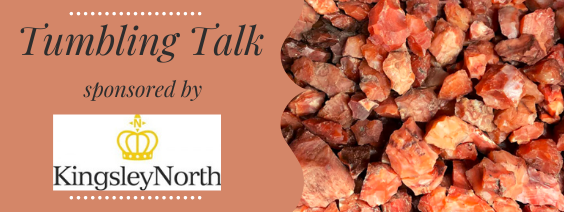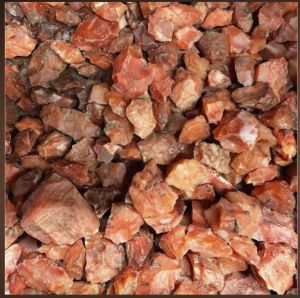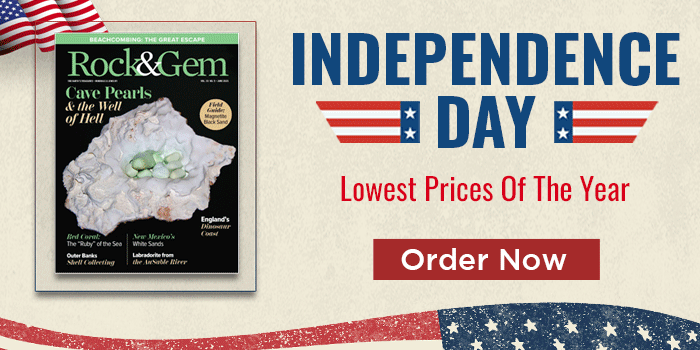
By Antoinette Rahn
All good things take time. Right? Well, sort of. If one were to wait for nature to run its course in tumbling rocks, in some instances, we’d need a time machine to appreciate the process fully. This truth is why rock tumblers are nature’s handy helpers and lapidary artists’ time savers.
In this new bi-monthly column, sponsored by Kingsley North, a long-time Rock & Gem advertising partner and a prolific ambassador to the lapidary community, we’ll discuss various aspects related to rock tumbling. Let the Tumbling Talk begin!
Ancient Tumbling Practices
Although modern rock tumblers and the hobby are relatively young, the practice of seeking smooth stones for various uses dates back to ancient times. While early civilization didn’t have today’s tumblers’ slick operation, nature’s process did the job. Furthermore, it seemingly inspired early humans to put to practice what they observed in nature. As author Steve Hart explained in his must-have reference Modern Rock Tumbling, in different locations of the world, a similar goal of “achieving smooth stones” was the focus of people’s efforts in Egypt and India but the approaches were different. Different stones for different folks?
Early Egyptians, often slaves, would select certain stones, slowly chip the stones into specific shapes, and then place the stones in troughs filled with water and sand. At this

point in the process, they would move the rocks in a back-and-forth manner allowing the combination of water and sand to tumble the stones. Meanwhile, in India, people would also select and chip at stones for a specific shape, but instead of a trough, they created what is known as a polishing bag. Made of goat skin, the bag would contain water, the chipped rocks, and fine rock that was ground. With the “ingredients” in the bag, they’d roll the bag on the ground, creating a manual polish process. In both instances, the outcome would most often be a polished stone, but it would likely take months to accomplish a single polish.
Ah, suddenly the picture becomes clear, but, even so, it would take until the mid-20th century before the modern tumbler would make its debut. We’ll discuss more of that in the next installment of Tumbling Talk. Plus, we want to take a few minutes to discuss the featured rough — carnelian tumbling rough — courtesy of our sponsor, Kingsley North.
Captivated by Carnelian
We selected this as the featured rough because carnelian, a variety of chalcedony, was a wildly popular stone in ancient times. It’s not surprising that early lapidaries had good taste, now is it? Interestingly, carnelian is a bit of a multi-personality, as it can be classified as both agate and carnelian, according to minerals.net.
Among the most abundant sources of carnelian are India, Brazil, Uruguay, and in the United States, New Jersey and Oregon host carnelian deposits. Just think, if you have the opportunity to visit a carnelian-plentiful destination, you’ll be sharing an interest and practice of ancient peoples, as you dig for rough you can transform into gemstone joy.
About Kingsley North: Kingsley North has provided equipment and supplies to lapidary artists and jewelry makers since 1977. The family-owned business, headquartered in the stunningly picturesque western corner of Michigan’s Upper Peninsula, is the product of dreams, hard work, and dedication of founder John Paupore Sr. and family members.
See What Kingsley North is up to…
















